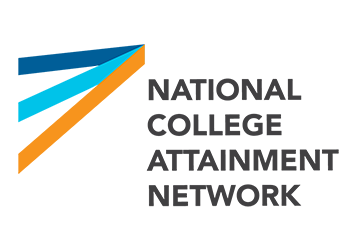 By Caroline Doglio, National College Attainment Network
By Caroline Doglio, National College Attainment Network
Even though it might feel like summer is far away, for some students summer melt might already be starting.
An estimated 10-40% of high school students with the intention to enroll in college never actually do so. This phenomenon disproportionately impacts students of color, first-generation students, and students from low-income backgrounds.
But why aren’t these students actually matriculating? The reality is that showing up to campus is not only a question of whether or not the student wants to go, but also if they have the resources to do so. Unfortunately, students often stumble when faced with complicated forms and processes.
Understanding financial aid is often the biggest barrier for students. It’s estimated that 7.2% of students selected for FAFSA verification do not receive subsidized federal as a result, and we know that verification disproportionately impacts Black and Latino students. These burdens add up, making it more difficult for students to enroll.
The first step to tackling summer melt is understanding how many students it’s impacting and their demographics. A senior exit survey is a great first step to collecting the necessary data. Harvard’s Strategic Data Project Summer Melt Handbook offers resources on increasing completion and what exactly to include in the survey with examples. The guide encourages crafting specific questions, like what students’ enrollment plans are and if they have paid their enrollment deposit.
With the senior exit survey providing an estimate of how many students intended to enroll at graduation, data from the National Student Clearinghouse (NSC)’s StudentTracker for High Schools service can provide a count of how many students actually enrolled.
Though potentially more insightful, identifying groups of students melting at a higher rate than other groups in order to perform targeted outreach; were there specific institutions with higher summer melt rates than others? Is it a race question? An income question? All of the above? Understanding who summer melt is impacting the most is the first step to performing targeted outreach for the years to come.
But how do we help students right now? And how do we make sure they matriculate after they leave the building? Some practitioners are turning to texting. Text Steps was a project piloted by Ascendum Education Group in 2015 and expanded to 13 school districts in Wisconsin between 2018 and 2020. Some key lessons outlined in the brief include:
- Successful summer melt interventions require the buy-in of both district and school leadership and frontline staff members
- Student-level data is key for understanding an intervention’s success — but working with data like this involves a learning curve, so prior planning is required
- Summer melt will start before summer and interventions should take place year-round
The school districts involved measured their impact through NSC data, comparing the postsecondary outcomes between the class of 2018 (control group) and the class of 2019 (who received the text messages). The average fall enrollment across the 13 districts increased by 3 percentage points.
These impacts were felt most by students of color and economically disadvantaged students. In 2018, students of color in participating districts had a 40% fall in enrollment rate, but 65% of students of color participating in Text Steps enrolled in fall 2019. Economically disadvantaged students participating in Text Steps had a 64% enrollment rate compared to a 37% rate for the class of 2018.
You can learn more about summer melt with NCAN’s toolkit and K-12 calendar. Have questions about summer melt? We’d love to hear from you! Contact Caroline Doglio (doglioc@ncan.org) to hear more about approaches to freezing summer melt.
RELATED ARTICLES:
NCAN Guest Blog: Don’t Reinvent the Wheel — Learn from Other School’s Success Stories (February 2023)
NCAN Guest Blog: Start Your Year Off Right by Refreshing your College and Career Toolbox (January 2023)
NCAN Guest Blog: As the Year Winds Down, Use NSC Data to Plan Next Steps (December 2022)
